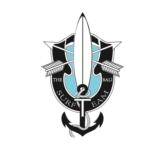Many travelers visiting the beautiful beaches of Kuta and Seminyak in Bali often wish to experience the thrill of surfing. Renting a surfboard is a convenient and cost-effective way to catch some waves and enjoy the sun and sea. In this guide, we will walk you through the process of renting a surfboard in Kuta or Seminyak, ensuring you have a smooth and enjoyable surfing experience while exploring the stunning coast of Bali.
Types of Surfboards Available for Rent
A
| Choosing the Right Rental Shop | Understanding Rental Terms and Conditions |
| Rental shops in Kuta and Seminyak offer a variety of surfboards for all skill levels. Consider factors such as board size, shape, and rental rates before making a decision. | If you are unsure about any terms or conditions in the rental agreement, make sure to ask the rental shop staff for clarification before signing. Pay attention to details such as rental duration, liability for damages, and deposit requirements. |
Choosing the Right Rental Shop
Rental shops in Kuta and Seminyak offer a variety of surfboards for all skill levels. Consider factors such as board size, shape, and rental rates before making a decision.
Understanding Rental Terms and Conditions
If you are unsure about any terms or conditions in the rental agreement, make sure to ask the rental shop staff for clarification before signing. Pay attention to details such as rental duration, liability for damages, and deposit requirements.
Inspecting the Surfboard before Renting
With any rental, it’s crucial to thoroughly inspect the surfboard for any existing damages or issues before completing the rental process. Take note of any dings, cracks, or discolorations and inform the rental shop staff to avoid any disputes upon return.
Securing the Rental and Payment Process
Renting a surfboard typically requires a deposit or some form of identification as security. Make sure to inquire about the accepted payment methods and understand the rental shop’s policy on refunds and cancellations. It’s important to keep a copy of the rental agreement for your records.
Tips for a Smooth Surfboard Rental Experience
Despite the excitement of hitting the waves, renting a surfboard can sometimes be a daunting task for beginners. Here are some tips to ensure a smooth surfboard rental experience:
- Best Time to Rent
- Negotiating Prices
- Surfboard Care and Responsibility
Best Time to Rent
Assuming you want to avoid the crowds and have more options available, it is recommended to rent your surfboard early in the morning or later in the evening. During these times, surf shops are less busy, giving you more time to find the perfect board for your day out on the water.
Negotiating Prices
Rental shops in Kuta and Seminyak are typically open to negotiation, especially if you are renting for multiple days. When negotiating prices, be respectful and polite, but don’t be afraid to ask for a discount. Mentioning that you are a beginner surfer may also help in getting a better deal.
After securing a rental agreement, make sure to carefully inspect the surfboard for any existing damages and discuss the shop’s policies on damages or lost equipment.
Surfboard Care and Responsibility
While renting a surfboard, it is important to treat the equipment with care and respect. Avoid dragging the board on rough surfaces, and always rinse it with fresh water after each use to prolong its lifespan. Be aware of your surroundings while in the water to prevent collisions that could damage the board.
This level of care not only ensures the safety of others in the water but also helps maintain a good relationship with the rental shop for future visits.
Pros and Cons of Renting a Surfboard
| Pros | Cons |
| Convenient – no need to travel with your own board | Potential damage to the rented board |
| Cost-effective for occasional surfers | Limited selection of boards available |
| No storage hassle | Risk of the board being already damaged before rental |
| Ability to try different types of boards | Inconvenience of returning the board at the end of the day |
Advantages of Renting
Pros of renting a surfboard include convenience, cost-effectiveness for occasional surfers, no storage hassle, and the ability to try different types of boards. Renting a board allows you to enjoy surfing without the responsibility of transporting and maintaining your own equipment.
Potential Drawbacks and How to Mitigate Them
Drawbacks of renting a surfboard may include potential damage to the rented board, limited selection of boards available, risk of getting a damaged board, and inconvenience of returning the board at the end of the day. To mitigate these drawbacks, it’s crucial to carefully inspect the board before renting, communicate any pre-existing damages with the rental shop, and handle the board with care during use to avoid additional damage.
To wrap up
With these considerations in mind, renting a surfboard in Kuta or Seminyak can be a fantastic way to enjoy the waves of Bali. Remember to choose a reputable surf shop that offers well-maintained equipment, consider your surfing skill level when selecting a board, and always negotiate for a fair price. By following these tips, you can ensure a smooth and enjoyable surfing experience during your time in Bali. So grab your board, hit the waves, and enjoy the thrill of surfing in one of the most renowned surf destinations in the world!
